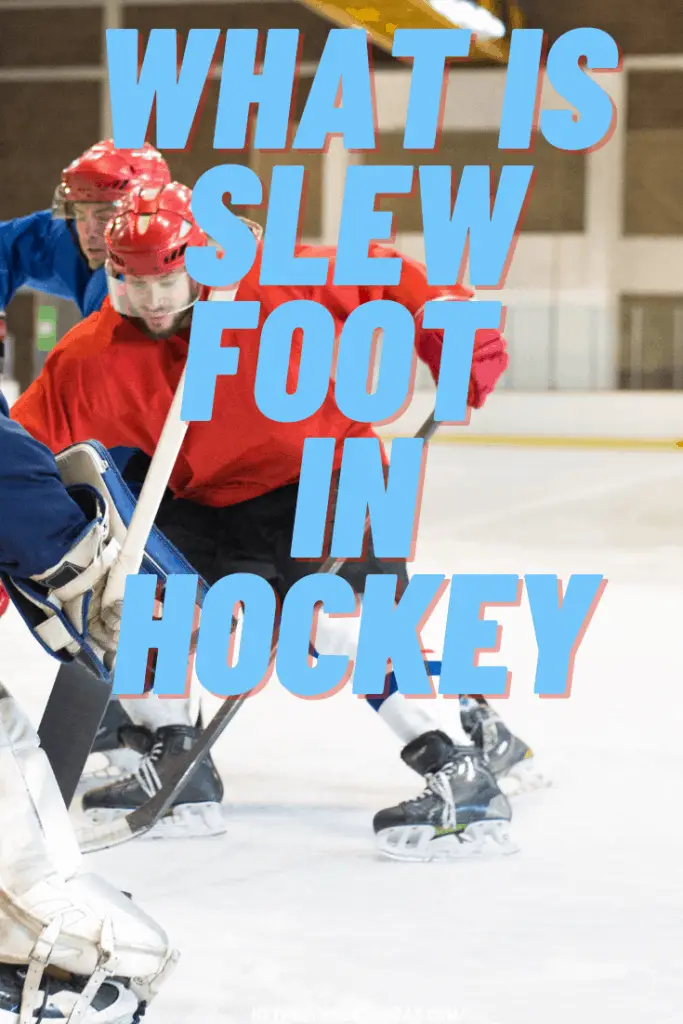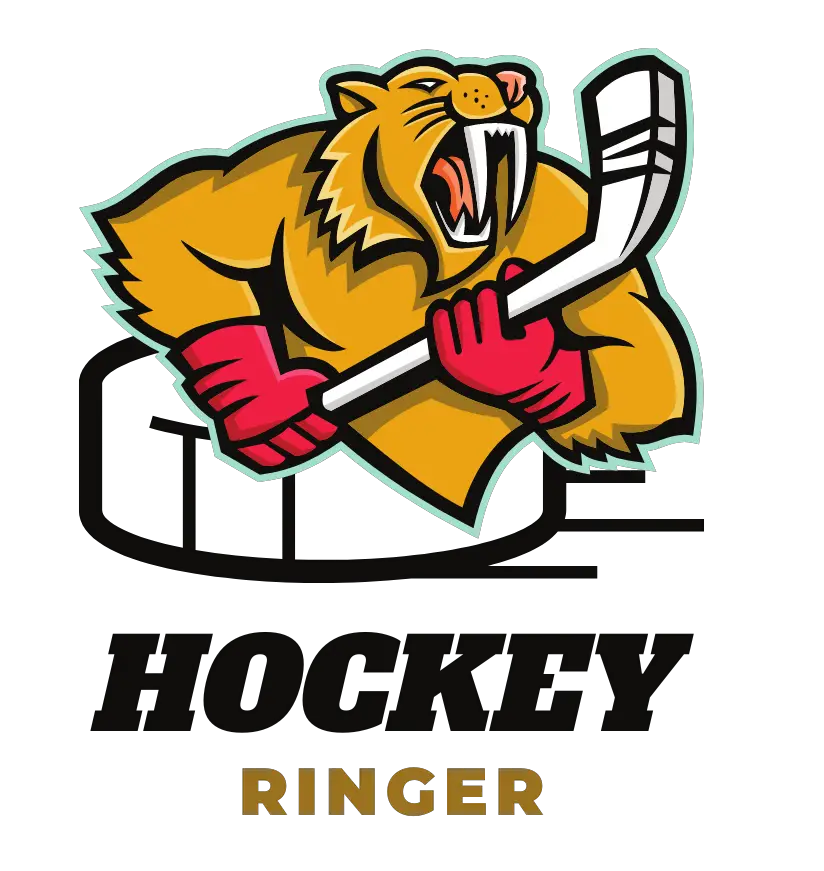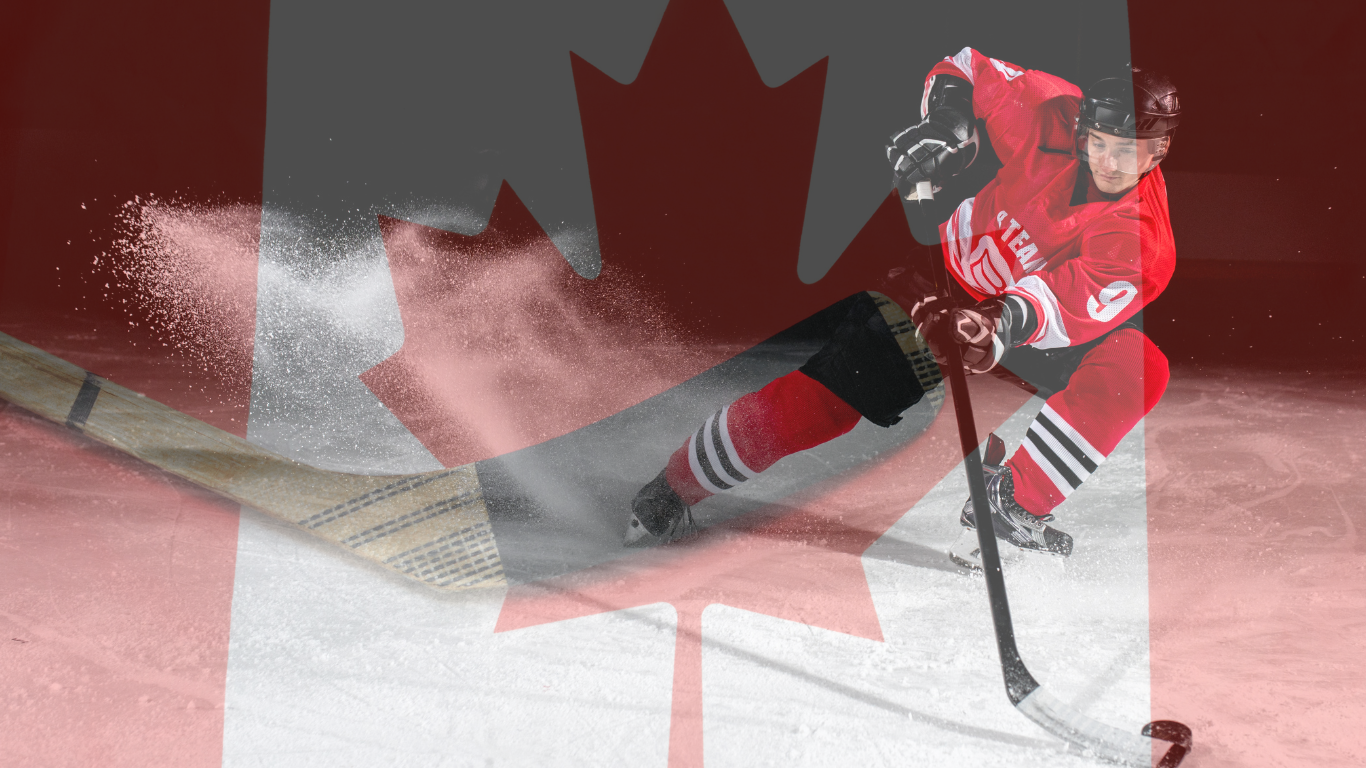Slew foot is an important hockey term to know. It is essentially called whenever a player swipes an opponent’s legs or feet out from underneath them when coming in behind. Slew footing is incredibly dangerous because it knocks the player to their back, which is why it is penalized in the game.
If you want to be well versed in the game of hockey, there is more you need to know about slew footing, including specifications of the rule and potential penalties. To find out more about this hockey term, keep reading.
What Is a Slew Foot in Hockey?
To put it simply, slew footing is whenever the guilty player knocks an opposing player’s feet from underneath them all while using their upper body to further knock the opposing player off balance. Let’s break down this rule because it has two main parts to be aware of.
Firstly, slew footing requires a player or goalkeeper to use their leg or foot so as to knock or kick an opponent’s feet from underneath them. This part of the rule is pretty simple and makes sense given the name “slew footing.”
There is one more part of the rule to be aware of. At the same time as kicking the opponent’s feet out from underneath them, the guilty player also pushes their upper body or arm against the opponent, further knocking them off balance.
In other words, the guilty party sweeps the opponent’s feet while putting additional pressure on their upper body, causing the player to fall backward.
However, slew footing could also be called if the guilty player simply knocks the opponent’s feet or legs out from underneath them. If they come from the back, the guilty player does not have to knock the opposing player with their arms or upper body.

Penalties for Slew Footing
Slew footing can either result in a minor penalty or a major penalty. Most of the time, slew footing infractions result in a 2-minute minor penalty. However, major penalties can be called at the referee’s discretion.
In the case that the referee believes the guilty player was trying to injure the opposing player through this movement, the referee can call a 5-minute major penalty and game misconduct. More serious penalties are typically only called if it seems that the player had no intention of making a play on the puck.
Slew Footing Referee Sign
If you are watching the referee, you can see when they make the slew footing sign. The referee sign for slew footing involves striking the right hand against the right outer thigh, somewhat in a chopping motion. This is more formally called the “tripping” signal.
Why Is Slew Footing Prohibited?
Players are often guilty of slew footing because they are trying to knock the opponent off balance. As you would imagine, knocking any player off balance in this way is incredibly dangerous, especially on the ice.
More so, slew footing is especially dangerous because it often causes the players to fall violently backward. This results in very dangerous injuries, which is why slew footing is prohibited in the game – it helps to keep players safe.
Slew Footing in Local Leagues
It is more common to see slew footing in local leagues than major leads because the local league players may feel the need to take advantage of smaller players through slew footing.
It is important for slew footing to be enforced in local leagues as well as major leagues since it can be so dangerous.
Is It A Slew Foot?
If you are new to hockey, it can be a bit difficult to determine whether or not a check was legal. There are ways that you can start understanding slew footing and catching them before the call. For example, you can check out the body position of the person who was hit.
If the opponent lands on his back with his feet up in the air, the check will most likely be called as slew footing. This is simply because it is next to impossible to land in this position unless slew footing occurred.
Although checking out the opponent’s body position is a pretty quick way to determine if slew footing occurred, this tip will not always work. You can also watch the referee’s hand signals to see when it is called.
FAQ
Can a goalie be called for slew footing?
Yes. Any player can be guilty of slew footing, including goalies.
How do you use “slew foot” in a sentence?
You can use “slew foot” as a noun in a sentence. For example, “A slew foot is called whenever a player knocks an opponent’s feet out from underneath them.” Another example of using this word as a noun is: “Slew footing is very dangerous.”
Are there loopholes around slew footing?
There are no loopholes around slew footing. The only way that you can get away with slew footing is to not do it at all. Instead, perform legal hits so that you can fight for the puck without risking penalty or unnecessary injury to the other player.
Where can I read about the official slew footing rule?
Slew footing is discussed in Section 6, Rule 639 of the USA Hockey Rulebook. In this rule, tripping, chipping, checking, and slew footing are all discussed extensively. These actions are defined, as well as the potential penalties.
Final Thoughts
Slew footing is an incredibly dangerous activity that is penalized in the game of hockey. A slew foot can be called whenever a player knocks the feet from an opponent while using their upper body to further knock the opponent off balance.
Slew footing often causes the player to land on their back, which is very dangerous.
Whether you are in a local league or trying to build a few more hockey abilities, it is important to avoid slew footing. Because it can be so dangerous to the players who find themselves victims of the play, it should be avoided at all costs.



